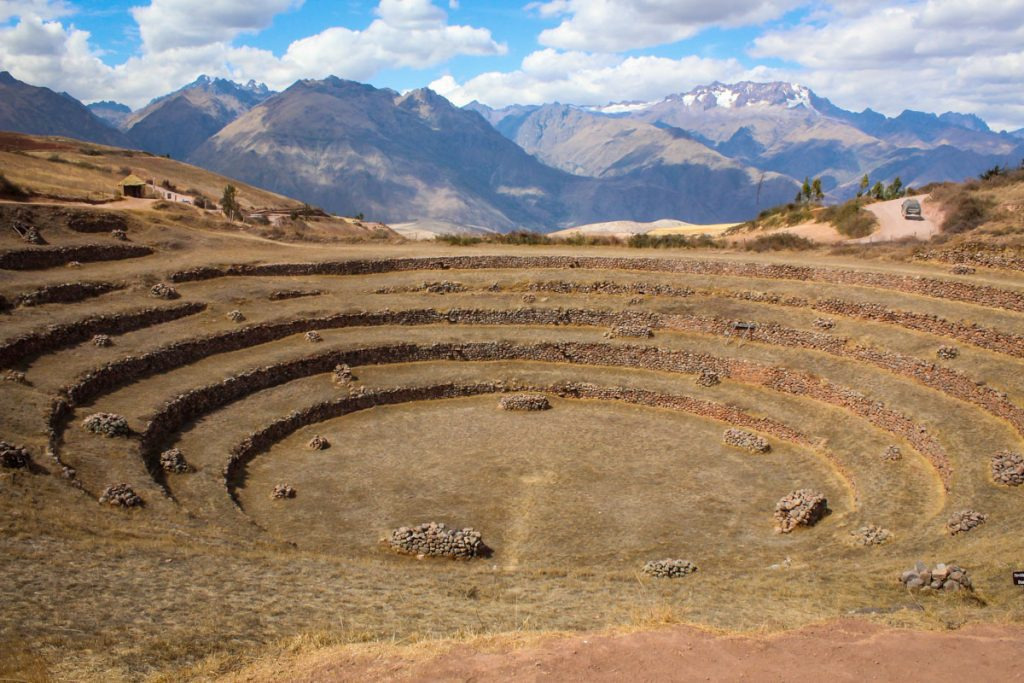No-one really knows why the circles of Moray were created. There’s a theory that this series of concentric terraces dug deeper and deeper into the Andean mountainside is the work of aliens, indecipherable messages from extra-terrestrial beings.
The more believable conclusion is that this gaping hole in the Peruvian mountains was created by the Incan civilisation. Machu Picchu, after all, is just nearby. Cusco is an hour or so away. The stonework, dated to about 500 years ago, is reminiscent of other Incan creations. It makes sense.
Still, mystery remains about the purpose of the circles, given the Incas left no written records. Was Moray a place of religious worship? Was it a mine? A quarry? Possibly.
The most compelling theory, however, is that these circles were built to experiment with food. In this amazing construction 150 metres deep where temperatures can change by five degrees from the top terrace to the bottom and where soil has been discovered from different regions around Peru, the Incas grew crops, to discover what thrived and what struggled at various altitudes and conditions.
Culinary innovation. That history gives a good context to the building now perched just above Moray, clinging to the windswept hillside with views over the mysterious circles. This is Mil Restaurant, the brainchild and plaything of celebrated Peruvian chef Virgilio Martinez. In this modest building, Martinez continues the Incas’ tradition of experimentation with food, using a modern test kitchen to conjure a unique and otherworldly set of dishes purely from the produce native to the countryside around here, high in the Andes, far away from anything you have ever known.
Mil is the pinnacle of contemporary Peruvian cuisine, and not just in terms of its altitude. This is where everything that is good and beautiful and stunning and enjoyable about this amazingly diverse country’s food scene comes together at a soaring peak. This is where you realise that Peru is truly special, that there is something happening here that takes place in very few countries around the world.
And that you need to discover, and taste, more.
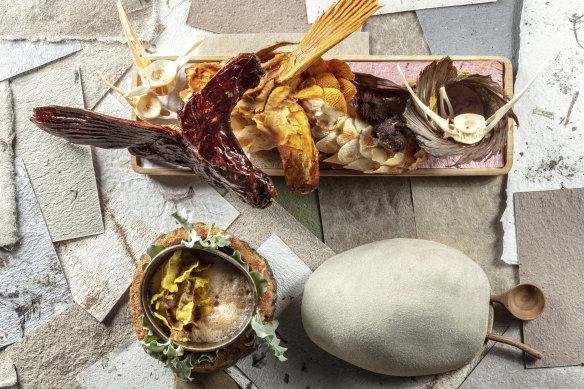
Where it all began
“Food is our new Machu Picchu,” says Erika Stigler, standing on the seafront in Callao, speaking to me a week before I make the pilgrimage to the Andes, to Mil. This is my first stop in Peru, a notoriously rough port town just outside the capital, Lima, a place few tourists tread, and yet one with a thriving food scene.
Stigler works for the Ministry of Culture of Peru, a government organisation tasked with revitalising Callao. This city, after all, is often the first point of contact for visitors to Peru: the international airport is here, and so is the country’s biggest shipping port, where vast waves of migrants have arrived over centuries from the likes of Spain, Italy, China and Japan.
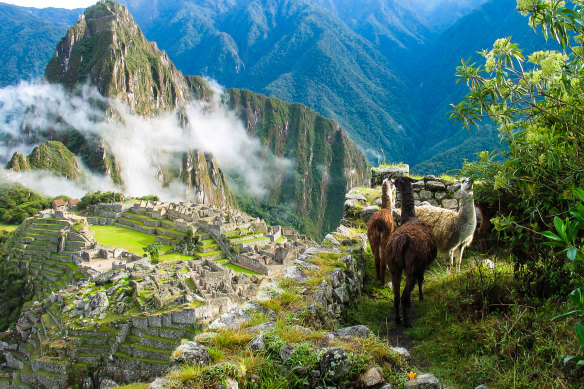
Those migrants, as well as native Peruvians, have all played their part in shaping this country’s modern-day dining scene into one which, by certain metrics, is on top of the world right now.
In June this year, the World’s 50 Best organisation released its most recent list of restaurants, and there was a huge surprise for Peruvians: Central, run by Virgilio Martinez, the uber-talented chef who also helms Mil, was crowned the number one in the world. Not only that, Central joined a whopping four Lima restaurants – more than any other city in the world – on that 50 Best list.
It’s no wonder then that food-obsessed travellers are taking notice of Peru, so many in fact that the country’s most famous tourist attraction, the Incan ruins of Machu Picchu, might soon take a back seat to the likes of ceviche and causa and arroz con pato as Peru’s key driver of foreign visitors.
I’m here to see what the hype is about. I want to see if the Peruvian culinary scene is just a freakish handful of fine-dining trailblazers who appeal to 50 Best judges, or whether those fancy eateries are the tip of the gastronomic iceberg, representative of the sort of deeply cherished and complex food culture we would more readily associate with the likes of France, Italy or China.
Callao is a good place to start. This is the coalface of Peruvian cuisine, a figurative and sometimes literal melting pot, where migrant communities settled and iconic dishes such as ceviche have emerged from working-class streets, where necessity has bred invention. And a prime example is El Colorao de Chucuito.
“I know I have real friends,” says the smiling, rosy-cheeked namesake of this hole-in-the-wall restaurant, “because I don’t have any money.”
Colorao is like that. He cracks jokes. He drinks pisco. He dances to the salsa music blasting from the TV in the restaurant’s corner. He occasionally retires to the kitchen, down a rickety wooden staircase, to prepare yet another dish of unique cuisine.
You wouldn’t know it, but Colorao – real name Andres Angeles Bachet – is kind of a big deal. His tiny eponymous restaurant by the beach in Callao was recently crowned Peru’s best “huarique”, a style of humble, family-run eatery popular throughout the country. Colorao is also humble, though he needn’t be: he’s cooked for pop stars and presidents, for all manner of Peruvian celebrities in his now-famous restaurant. And yet still, he says, he has no money, and he only wants to make good food.
“I’m always looking for that perfect cooking point,” he tells me through Stigler, acting as interpreter, as I eat a dish of bonito cooked in rich escabeche sauce. “Always looking for it. One tiny pinch of salt. One second more of cooking. That is what my life is for: finding that perfect point. Taking food to another level.”
Rising stars
What makes a food culture truly great? What are the signs that you are dealing with a country in the top tier? Certainly you need a distinctive, unique cuisine.
Peru has three of them.
These three cuisines correlate with the three vastly different ecosystems and climates in Peru. First, there’s coastal cuisine, which uses the bounty of the ocean – fish, clams, squid, prawns – though it also features plenty of rice, chicken, beef, duck, and unique ingredients such as aji amarillo, a yellow chilli, and rocoto, a red chilli.
Then there’s the food of the Andes, in which most of the seafood disappears, replaced with potatoes, maize, and proteins such as alpaca meat, llama, and even guinea pig. These foods are sometimes cooked in ground ovens called pachamancas.
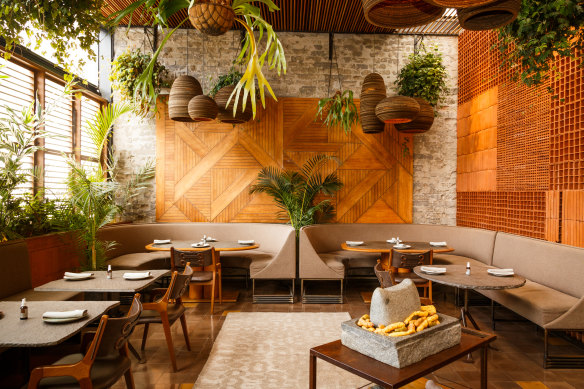
And finally, you have the cuisine of the Amazon, a place of incredible diversity in terms of both flora and fauna, where cooks have their choice of native river fish such as paiche and pacu, as well as tubers and fruits you won’t find anywhere else on the planet.
For proper greatness though, a country also needs to adapt foreign influences and ideas with its own ingredients and techniques. And Peru has done that. There’s a whole separate fusion cuisine of Peruvian and Chinese food called “chifa”. There’s a globally popular blend of Peruvian and Japanese called “Nikkei”.
And then of course, a truly great food culture requires one more ingredient: passion. Not just from chefs, but passion for cuisine shared by an entire nation.
“We wake up every morning thinking about breakfast, and when we are still eating breakfast we think about lunch, and during lunch we think about dinner,” laughs Arlette Eulert Checa, the chef and owner of Matria, a renowned Lima restaurant. “And we talk a lot about food. Always.
“You know there’s a group of Peruvians when they’re talking about food. When they’re in other countries they talk about the food all day. We have to stop. But also, food for us … if I give you food, it’s because I want you to feel loved. That’s the reason.”
Checa and Matria are an important part of a hugely exciting dining scene in Lima right now, one being led by a talented, creative band of chefs making the world take notice, thanks in no small part to the World’s 50 Best.
One of that list’s inclusions, a new entry this year at number 47, is Mayta, a modern Peruvian fine-diner helmed by local chef Jaime Pesaque. For his part, Pesaque puts the success and the brilliance of Peruvian food down to the unique set of ingredients he and his fellow chefs can work with.
“We’re very lucky,” he tells me as I sit down to 12 courses of his amazingly artistic, complex cuisine at Mayta.
“Every cook can have creativity and vision, but we’re lucky because we’re in a country that has many microclimates: we have ocean and coast and the Andes and the rainforest. So our country is unique.
“But there are also all the cultures that came here. Like Japanese, Chinese, Italian. So, Peru is rich in ingredients, and in flavours, and in cultures. With all that mix … we know how to eat well.”
Without doubt the most famous of Peru’s cultural blends is Nikkei, the use of Japanese techniques and traditions with Peruvian ingredients. Though this fusion may sound like a modern fad cooked up by an overly creative chef, it’s a cuisine that has emerged entirely organically.
Jorge Tomita is the chef and part owner of Shizen, a wildly popular Nikkei restaurant that is part of the modern Lima cohort. His grandmother, he explains, and many of her generation emigrated from Japan to Peru and continued to cook the food they had always made, only using the ingredients available to them.
“Little by little, the traditional Japanese recipe goes in another direction,” Tomita says, now, as I sit down to yet another incredible feast. “My grandmother used a lot of local ingredients. So you know, it’s been a very organic change, very natural.”
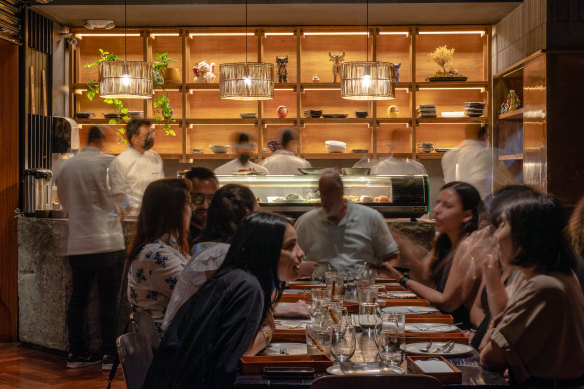
Tomita has seen plenty of changes in the Peruvian dining scene lately, particularly in the past few years as the rest of the world has begun to take notice.
“We’re rediscovering our own food,” he says. “Maybe in the time of our grandparents or our parents, if you wanted to celebrate something you would go to an Italian restaurant, or French. But now, if we want to celebrate, we go to a Peruvian restaurant. We want to have ceviche, or Nikkei, or anticuchos [Andean meat skewers].
“Our food makes us very happy. And our food shows the feelings of the people too. You can know our people, what we love, what we are passionate about, through our food.”
The pinnacle
Why, you might wonder, did Virgilio Martinez put his new restaurant so far from tourist-friendly Cusco, a 1.5-hour drive, making it so awkward to get to?
It wasn’t just because of the parallels with Incan culinary experimentation at Moray. It was, you realise, to show his diners Peru, to show them the Andes, to make them get in a car and journey through tiny Andean villages, past shops selling fried guinea pigs (cuy) and crispy pork skin (chicharron), through valleys and up mountains, so that by the time they arrive at Mil they already have a rich understanding of the provenance of the food they are about to eat.
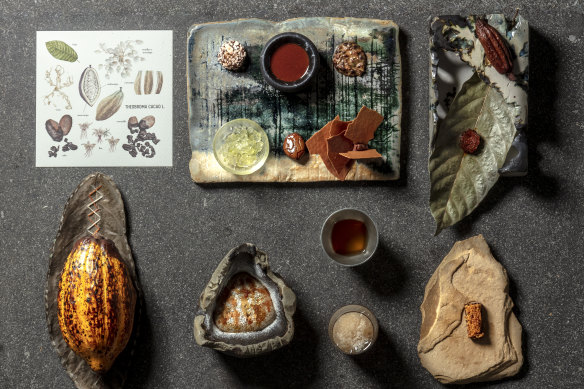
Diners begin their experience at Mil staring over the ruins of Moray, pondering Peru’s rich history. They’re then led through the square Mil building, four sides around an open central courtyard, with a test kitchen on one side, a display of ingredients on another, a bar, and finally the spartan dining room.
My seat faces a small window framing a perfect slice of Andean beauty, a steep hillside, a bright sky. The light on my table changes constantly as clouds sweep across the mountains, the sky blue, then white, then grey.
The meal at Mil is broken into eight courses that each feature multiple dishes meant to be tasted on their own, and then sometimes mixed. In each course, all the ingredients are sourced from a particular subsection of the Andean ecosystem, or using a specific technique.
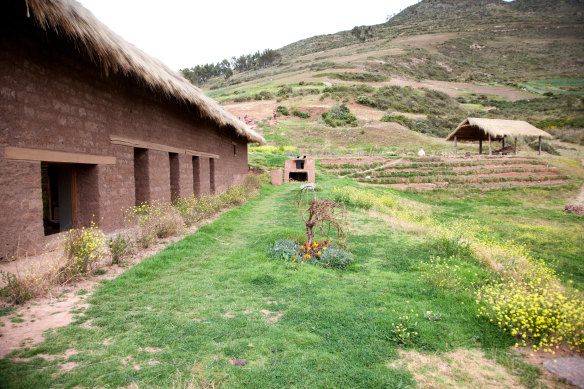
The result is mind-boggling in its brilliance. These dishes are created with ingredients you have probably never heard of before: uchucata, cabuya, cushuro, ayrampo, piscorunto, callampa. They’re almost entirely vegetable-based. They are also unique, with no discernible influences of anything you would have seen before.
Each is served in a clay or wood vessel, shaped by local hands. The first course is eaten with a lump of stone as a knife. These elements connect you to the Earth, to the Andes, to Peru.
And everything – everything – is incredibly delicious. For all the artistry on show here, for all the avant garde seriousness, this meal at its core is just supremely good food. It’s a phenomenal achievement.
But it’s also just the beginning, just the tip of that culinary iceberg.
The writer travelled with assistance from Prom Peru. See peru.travel
THE DETAILS
FLY
LATAM flies daily from Sydney to Lima (via Auckland and Santiago), and three times a week from Melbourne to Lima (via Santiago). See latamairlines.com
STAY
In Lima, Casa Andina Premium Miraflores is a centrally located, five-star hotel with all modern amenities. See casa-andina.com. In Cusco, the JW Marriott El Convento is a beautiful hotel set in a 16th-century convent. See marriott.com
EAT
Bookings at the following restaurants are essential. For Mil, see milcentro.pe. For Mayta, see maytalima.com. For Matria, see matriarestaurante.com. For Shizen, see shizen.meitre.com. For El Colorao de Chucuito, call +51 999 499 949.
Five dishes to try in Peru
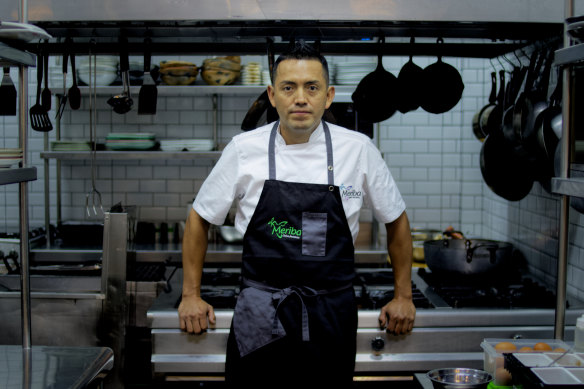
Though there are very few Amazonian restaurants in Lima, you should certainly make time to dine at Meriba, the work of chef Wilson Villar. Villar hails from the town of Tingo Maria, deep in the Amazon, and his grilled pacu – a native river fish – marinated in Amazonian citrus, is nothing short of revelatory. Ph: +51 944 225 069
Tiradito de concha y rocoto, Shizen
This is the perfect example of the brilliance of Nikkei cuisine: at Shizen, chef Jorge Tomita mixes fresh scallops with spicy rocoto chillies and “leche de tigre” sauce, topped with avocado, diced onion, coriander and sweet potato crackers. Salty, sour, crunchy, tender – perfect. shizen.meitre.com
Arroz brutal, Matria
The translation for this popular dish of Arlette Eulert Checa’s is simply: brutal rice. So yes, it’s spicy. It’s also a risotto-like dish that is studded with local clams, prawns, mussels and fish, cooked in a rich broth of tomatoes and local Peruvian chillies. Pair it with a seasonal, pisco-based cocktail. matriarestaurante.com
Mojama, El Colorao de Chucuito
Though many of the dishes at El Colorao in Callao are one-offs that you will never see again, this one is a classic. Colorao takes large hunks of tuna and sun-dries them, before cutting them in meaty chunks and serving them with a picante sauce, plus avocado and crackers. Perfect, Colorao says, with a shot of pisco. Ph: +51 999 499 949
Tubers, Mayta
All of the dishes at Jaime Pesaque’s Lima fine-diner are works of art, though this one is truly special. “Tubers” is a mille-feuille of razor-thin potato crackers dolloped with the tiniest, most elegant dots of mashed local potatoes, topped with micro herbs and served on a garden bed. maytalima.com
Five essential Peruvian experiences (to enjoy between meals)
Hike the Salkantay Trail
Though the Inca Trail is Peru’s best-known hiking path, the nearby Salkantay Trail – a 48-kilometre, five-day walk through the high Andes – is arguably more spectacular, and certainly less busy. Though the trail won’t bring you to Machu Picchu, it does finish within easy striking distance. See gadventures.com
Visit Machu Picchu
There are alternatives to Machu Picchu, including the amazing ruins of Choquequirao; however, this sky-high Incan city is still one of the world’s truly great attractions, and well worth a visit when you’re in Peru. Just be sure to arrive very early to avoid the bulk of the crowds. See peru.travel
See the Nazca Lines
Over a period between 500 and 2000 years ago, the Nazca people carved huge straight lines, trapezoids, rectangles, and biomorphs – abstract plant and animal shapes – on the desert floor south-east of Lima. Those mysterious, colossal shapes remain today, and are best viewed by light aircraft. See peru.travel
Cruise the Amazon
Though Peru is best known for the soaring Andes, and most people visit the coast, you should also make time to explore the diverse and incredible Amazon region. This is best done aboard a river cruise, taking in the jungle, the wildlife and the cultural splendour while enjoying a little luxury. See delfinamazoncruises.com
Visit Museo Larco
This Lima establishment is one of the world’s great museums, housing a private collection of more than 50,000 pieces of ceramic work, jewellery, textiles and more, spanning more than 5000 years of Peruvian history. Museo Larco provides the ideal knowledge base from which to explore the country. See museolarco.org
Source : Traveller

